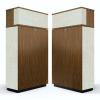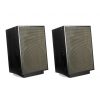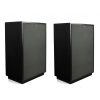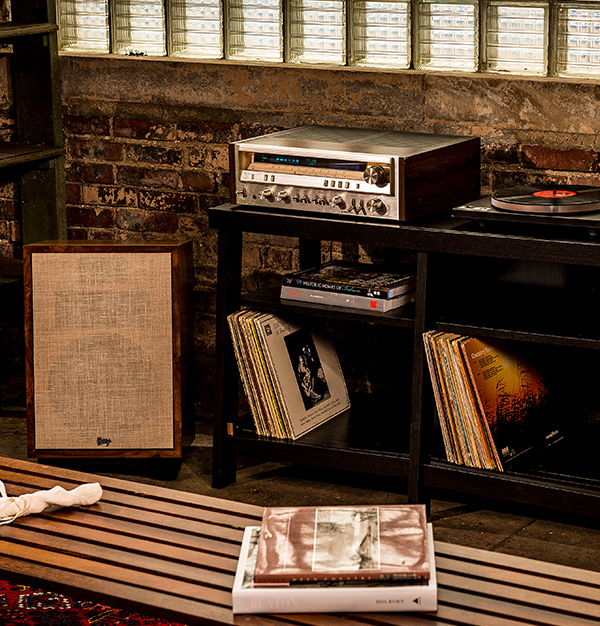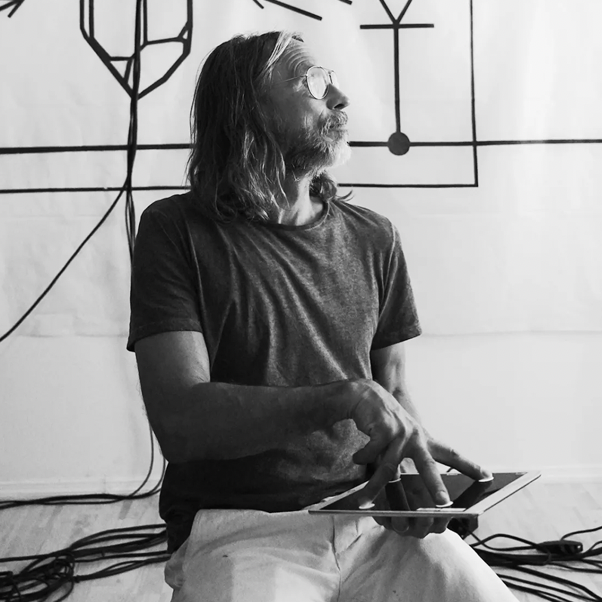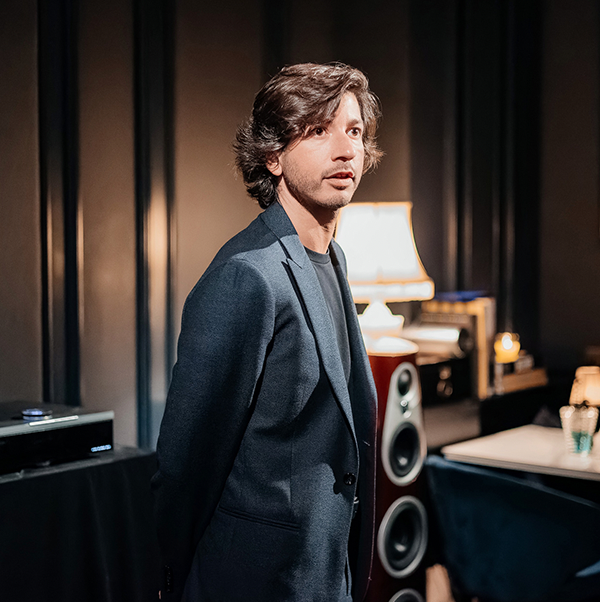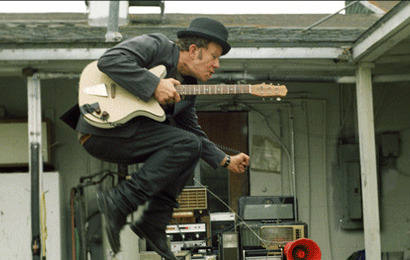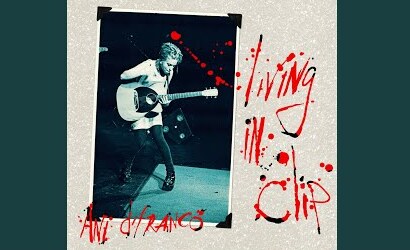78 Years of Heritage
“Bringing the experience of live sound through speakers.”
What would Mr. Klipsch say today? Founding one of the first US loudspeaker companies in 1946, Mr. Klipsch built a legacy by introducing legendary sound systems that have defined decades of audio experiences.

1958 FEB Issue of HiFi & Music Review
Mr. Klipsch passed in 2002 at the age of 98 but his presence remains. There is no better proof of this than our Exclusive with KLIPSCH Engineer Roy Delgado who joined the company 38 years ago. His close collaboration with the late Paul W. Klipsch not only honed his skills but also fostered a deep friendship that continues to inspire his work. Hailing from Hope, Arkansas, Delgado's expertise and passion have played a pivotal role in shaping the brand's legacy of innovation and excellence.
Meet KLIPSCH through the stories of Delgado as he recalls the timeless sayings of Mr.Klipsch, and re-discover the three iconic speakers of Klipsch’s Heritage line:

1990 MAY Issue of Stereo Review
Heritage was a word that was first brought up by a product manager. It seemed fitting to group Mr. Klipsch’s first speakers into a category like this because of the history; so that we would not forget our roots and what KLIPSCH stands for. Since I worked very closely with Mr. Klipsch, we talked quite often about the next steps of where the Heritage line of speakers might go. Many discussions between Mr. Klipsch and myself were held about ideas of how the next iterations of the heritage line were to possibly go. Since Mr. Klipsch’s passing, my job (and my honor) is to remember them and execute those ideas into the next iterations of the heritage line.
I was taught by Mr. Klipsch to never be content.
To always be looking for something that, through experimentation, acoustics, physics, and ability to understand what might improve on the experience. Change for change sakes is not applicable to the Heritage line. It must be an advancement in the science and art of sound and it must be something that Mr. Klipsch wanted to do but just ran out of time.

An engineering breakthrough at the time of release
which remained one of the most highly praised loudspeakers in the world.
Get to know:
Klipschorn
The Klipschorn was designed with acoustics and physics leading the way. Mr. Klipsch decided early on that efficiency should be the driving factor. The ability to turn as much electrical power into acoustic power as possible.
Mr. Klipsch used to say that when the laws of physics change, then so will his thoughts on speakers.
In most cases of loudspeakers, higher sensitivity can be attributed to higher efficiency, although that is not always the case. Higher sensitivity that is attributed to higher efficiency then leads the system to be able to reduce distortion; this is the culprit that can degrade the live sound experience. Horn loading a driver, if done properly, will increase its efficiency; typically by about 2-4 dB. Directivity provided by the horn will increase the sensitivity depending on the coverage pattern; sometimes by about 5-7 dB.
The low-frequency unit has basically remained the same for over 75 years now. What amazes me about that is that Mr. Klipsch did not have solid modeling, computers, or even a fancy calculator to help him design it. It is to Mr. Klipsch’s genius that he was able to visualize in his mind exactly what he wanted to try to prototype and proceed with cutting the wood panels. This is not a trivial task.

Klipschorn Jubilee
Mr. Klipsch himself tried to improve on the Klipsch low-frequency horn. We started working on what he wanted to call the Klipschorn II. Once the new lf horn was prototyped and prototyped, we finally came up with an lf horn that Mr. Klipsch was happy with. When I set up the new lf horn with a horn so that Mr. Klipsch could listen to it compared to a current Klipschorn, Mr. Klipsch decided that it could not be called a Klipschorn II; rather he thought it should be its own model and thus the Klipschorn Jubilee was born.

Released in 1985 it became
the most popular KLIPSCH model.
Get to know:
Forte IV
The dims of the cabinet were very “friendly”. Using a passive, helped to extend the low limit. Having a horn-loaded midrange and tweeter that covered the frequency range of 700 Hz and up helped to bring the Klipsch acoustic philosophy to more people.

As I previously stated, Mr. Klipsch and I talked a lot. When I started at Klipsch, he was already working on steep slope networks. The idea behind this can be laid at the guiding principle of efficiency. By combining the electrical and acoustical slopes of the drivers and the impedance response of drivers, the elements in a network can be manipulated to increase the acoustic slope of the drivers thus narrowing the “interference band”. This band is where one driver hands off to another. If the interference band is wide, then as you move around the space the frequency response will change because of nulls and dips. Minimizing the interference band, minimizes these effects thus making the drivers more efficient in their bandwidth.

The world's first commercial center channel speaker.
Get to know:
Heresy IV
The Heresy provided Mr. Klipsch with the ability to fill in the “hole” between two widely spaced, corner-loaded Klipschorns. He designed a circuit that basically monoed the left and right speaker to a center speaker thus creating the first center channel. When a speaker is loaded in a corner, it basically “sees ⅛” of the air that it normally would see if it was suspended outside. Not having to load and move so much air makes the system more efficient as it is much better able to couple to the air. When a speaker is designed that is not meant to be corner-loaded, then the challenges are different. The designer has to consider just where it might be placed in a worst-case scenario. Placing a speaker on a floor is now driving “½” the air. That changes how the speaker is voiced and designed.

To me, it shows Mr. Klipsch’s curiosity of always trying to solve acoustic problems.
Mr. Klipsch was also very involved in pushing stereo, even to the point of creating his own stereo recordings to show how the listening experience could be expanded.

To dive deeper into the world of KLIPSCH, visit their brand page and discover all available systems with the latest feature updates.
WHY READ THE DUBAI AUDIO BULLETIN?
The answer is simple: We are the long-term solution to all your audio inquiries.
Our features highlight the most relevant topics and deliver exclusive insights directly from brands and industry leaders themselves. Witness the evolution of the industry with Dubai Audio and become a part of the audio culture.
Discover newly unveiled releases, enrich your audio portfolio with the best systems, and make more informed purchasing decisions with Dubai Audio. Sign up for our newsletters to receive curated music and recommendations tailored to your requirements.
